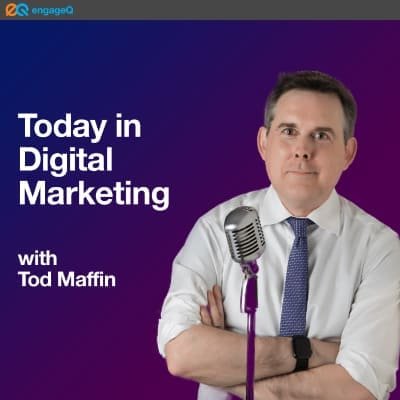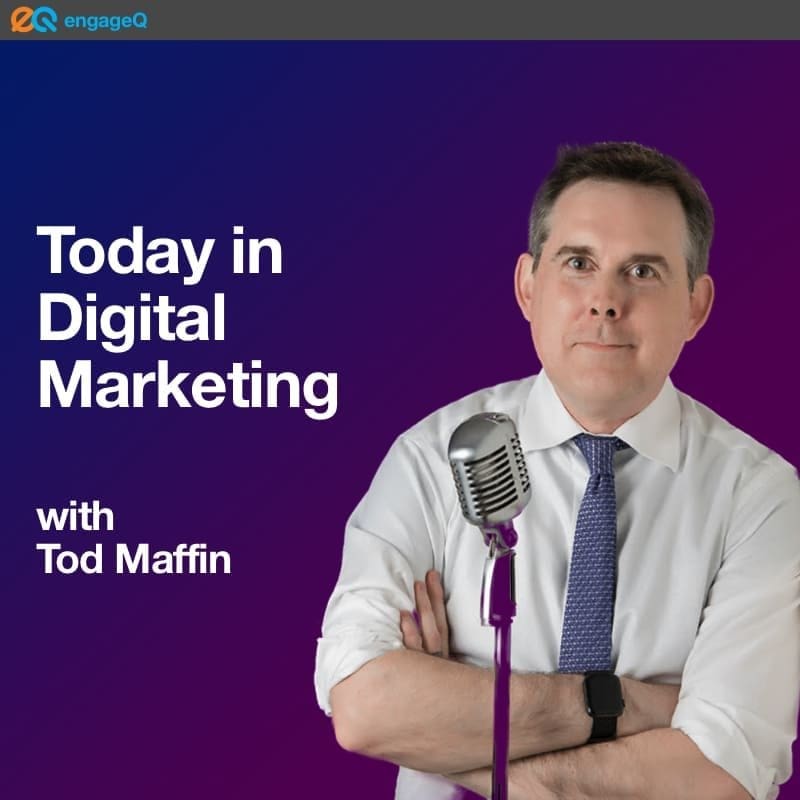As marketers, we're always taught to build a strong relationship with our consumers, and keep building it stronger and stronger.
Problem is, most consumers couldn't care less about us, they want a solution to their problem, not a transmedia brand experience.
Is it possible, though, to exploit this psychological distance between consumers and brands, by just changing how we write our marketing copy?
Scott Conners is an assistant professor of consumer behavior at Western University. He and his colleagues recently published a scientific study called “They're just not that into you. How to leverage existing consumer brand relationships through social psychological distance.”
Dr. Connors recently spoke with our podcast host Tod Maffin.
Tod: These strong relationships that we marketers are looking for, they're pretty rare, right?
Scott: Oh, absolutely. This is what drove our interest in this paper is, we were looking at the idea that these prevailing marketing practices have been to forge these strong relationships between the consumer and the brand, and what we see is that it's just not something consumers always want. We did a quick pilot study to investigate just this general principle here, and what we found was that, on average, consumers only have about two brands that they feel are truly important to them, and they feel connected to. There's some other research showing that about 77% of consumers don't report any strong brand relationships in their lives whatsoever.
We pair this with– There's been some more large-scale practitioner research done by Harvest recently, showing that, even though a majority of brand content might seem meaningful for consumers, they could care less if most brands disappeared. We wanted to explore this notion of, how do we look at the types of relationships that consumers are having with brands if they're not these strong connected ones? What do we do with that?
Social Psychological distance
Tod: Your paper makes reference to social psychological distance. What is that?
Scott: Yes, if we think about that proud BMW owner colleague that we all know and have, they all live the brand, and in this case, you can see how that would be psychologically close to that individual, that BMW brand. On the other hand, consider, I love this example of a male colleague of mine who enjoys a good vodka soda, and he mixes it with skinny girl sparkling water, which if you're not familiar, is a brand of sparkling water, and he is very quick to hide these empty bottles whenever I come over to share a drink with them.
In this example, you can see maybe how the brand would be perceived as more distant, he doesn't want that associated with his self-concept in this case. What's interesting is this is done despite the fact that we can see that both of these examples are brands that the consumer is still purchasing frequently, there's still loyalty there.
Concrete vs abstract language
Tod: In your paper, you talked about the difference between using concrete language and abstract language in our marketing communications. How can we specifically use those in order to strengthen that consumer connection? How should we change our marketing copy?
Scott: I'll give you an example from a study that we ran out in Singapore, and what we did here was we looked at a high-end tea brand. We set up a little popup shop, we had people who just thought this was a general tea pop up shop selling a new line of products that had launched for that season, and basically what we did was, when they approached the table, we gave them some information, and it was between subjects.
What that means is some people saw one version of it, some people saw the other. What happened then, in this case, was some saw the concrete language, some saw the abstract language. In the concrete condition, what we showed people was text like, “Allow the tea bag to steep for four minutes, no more, no less. During this time, leaves open, hydrate, and fuse the cup with the essence of the aroma of tea and fruit, and flowers.”
What we have here are concrete words that refer to tangible qualities or characteristics. Things we know and can experience and verify through our senses, and often it deals with talking about how you might use a product or how you would use a brand.
For the abstract side of things, for your more distant brands, you would want to use abstract language. As an example, we said, while the tea steeps, the ethereal essence envelops and soothes because each tea is playful yet calming aromas. In this case, we're using things that are more intangible, dealing with ideas and concepts and more abstract words like love and the ethereal and things that are harder to give that concrete meaning to. What we saw in the example of this study here, was when we matched people who felt distant to the brand with high-level abstract language, they spent 35% more on the product in a pay-what-you-will situation, whereas when people felt close to the brand, and we match them with low level concrete language, we saw an increase in 28% in spending in that pay-what-you-will format. A pretty sizable jump in the amount that they're willing to spend, which is particularly interesting when you consider, one side of that effect is people that actually don't feel closer committed to the brand at all and we're seeing this nice improvement in the actual spending and purchase behavior.
Determining Distance
Tod: How do we know, though, whether a consumer sees us as close or distant? If we're running an ad campaign, there's no marker or setting or toggle switch on Facebook's, say, ad manager, for “Show me consumers that are really connected to us, show us consumers that really don't care about us.” How do I delineate between those two groups?
Scott: That's a really interesting question. Something that we really forwarded here with this paper was the idea that we should be looking at self-brand distance as a segmentation variable, because obviously, then we can understand when to use concrete or abstract language. What we look at is we can use, for example, what consumers write on social media, or have market research firms or in-house research teams develop real-time monitoring tools, that include dictionaries that are able to code for language that reflects closeness or distance.
We see, there's already some coding algorithms and things like that, that we can apply to data in that way. Another approach could just be serving our consumers directly, taking a sample from a target market psychological distance, or as we call it self-brand distance in this context, is something that can actually be captured very easily with just a single one item measure much in the way that we would use Net Promoter Score now. It's a very simple thing to assess and we can draw a lot of information from that as well. That lets you get a sense of, how close or distant does your target market feel to your brand, or does your consumer base feel towards your brand.














